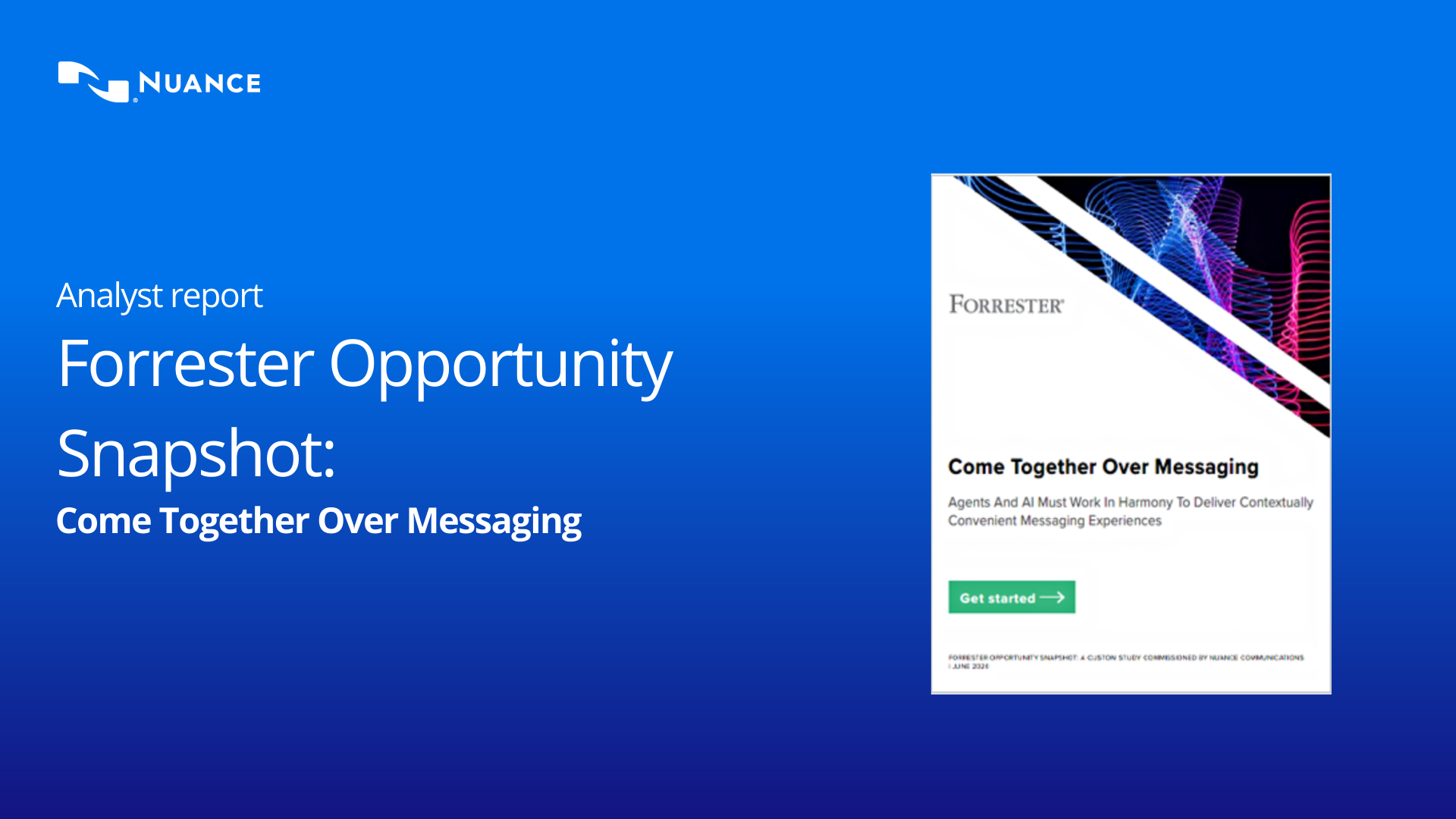As firms race to embrace the messaging channels that customers love, many are struggling to deliver the contextual experiences that customers crave. In its new study, Forrester explores the obstacles that customer engagement decision-makers face, and the strategic actions they can take. We share some of the key findings, including leveraging Chat VA Routing and the importance of augmenting human agents with AI to help capture and share the context that too many messaging interactions lack.
Sending a message to a friend or family member is second nature. It’s quick, and above all, it’s extremely convenient. That convenience is something every customer-centric organization would love to bring to its support and service interactions.
Most brands have been quick to embrace platforms like WhatsApp and Facebook Messenger—not to mention in-app messaging and SMS. But adopting these channels is only half the battle; brands also need to replicate the convenience that customers experience in their messaging interactions with friends and family.
This is crucial work. Nuance recently commissioned Forrester Research to conduct a survey of 276 customer engagement decision-makers, worldwide. The new study reveals 84 percent are seeing (or expecting to see) negative business outcomes as a result of the challenges they’re experiencing with their messaging strategy—from lower customer satisfaction to higher agent turnover and customer churn.
So what obstacles do brands face? And how can CX leaders ensure the decision to support messaging channels does, ultimately, have a positive impact on customer satisfaction and business performance?
Marrying channel mix with messaging maturity
It’s great to support everyone through their messaging channel of choice. But as brands have raced to meet customers wherever they are, there’s evidence their ability to decipher customer intent has lagged behind.
The majority of those surveyed (62 percent) report using messaging platforms for customer support or communications, and use of brand-owned channels is almost equally common. But when it comes to messaging maturity, it’s a different story. Only about one-third of respondents have a single view of the customer and feel strongly that they can personalize interactions across the buying journey.
The need to partner human agents with AI
In messaging channels—as in all engagement channels—the most convenient, positive interactions occur when service agents understand the customer’s journey so far, what their preferences are, and what they want to achieve.
AI should play a pivotal role in capturing and sharing this crucial context. As the Forrester study puts it, “The reality is that consumers seek convenience, and the moment of truth is when they engage with a brand. If firms want to exceed customer expectations in this moment, they must augment human agents with AI in a way that improves both the agent and customer experience.”
One simple tactic is to front-end messaging conversations with a chatbot designed to understand a customer’s intent, and route them to the right agent for their needs; something Nuance has been doing for over 20 years. When the customer arrives with that human agent, AI-driven solutions can help drive convenience too—supplying the agent with useful contextual information, such as known customer preferences, or even recommending next steps.
Context-driven messaging experiences: the opportunity
Despite AI’s power to help fill this context gap, most brands have yet to build it into their strategy; just 24 percent of those surveyed reported using a blended human and AI approach within their messaging platforms.
That means there’s a huge opportunity for brands that do team up their human agents with AI, not just to improve messaging channel ROI, but to deliver customer experiences that really stand out from the crowd. And the customer engagement leaders Forrester has spoken to agree. They identify a broad set of benefits to be gained from providing seamless, context-driven, and conversational experiences, including increased customer loyalty, improved agent engagement, and greater contact center efficiency.
Find out more: read the Forrester study
Read the Forrester Opportunity Snapshot to dive much deeper into its findings and read the analyst’s expert analysis and strategic advice. You’ll discover:
- The five most common challenges brands face around messaging strategy
- How the privacy-personalization paradox manifests in messaging channels—and the implications for customer engagement leaders
- The steps brands should take to combine messaging and AI, and create truly differentiated experiences







